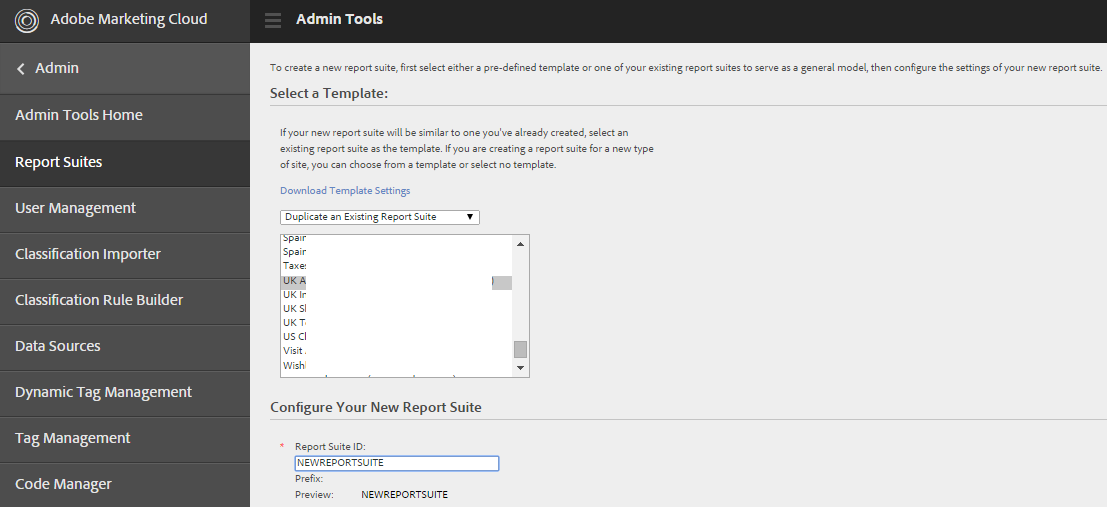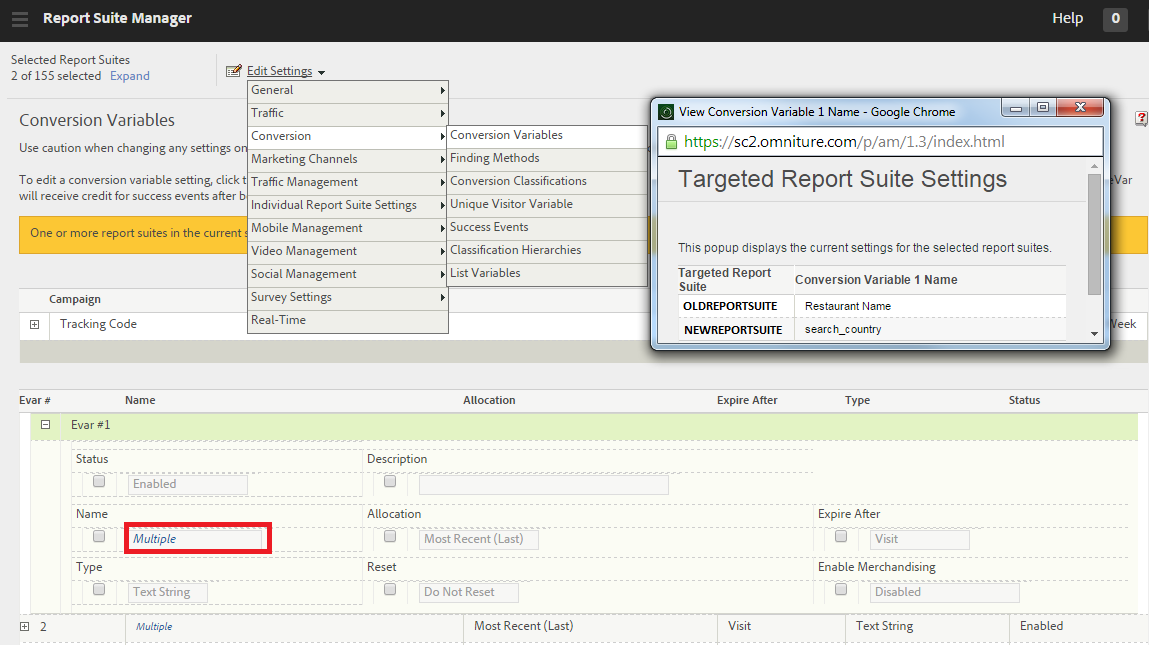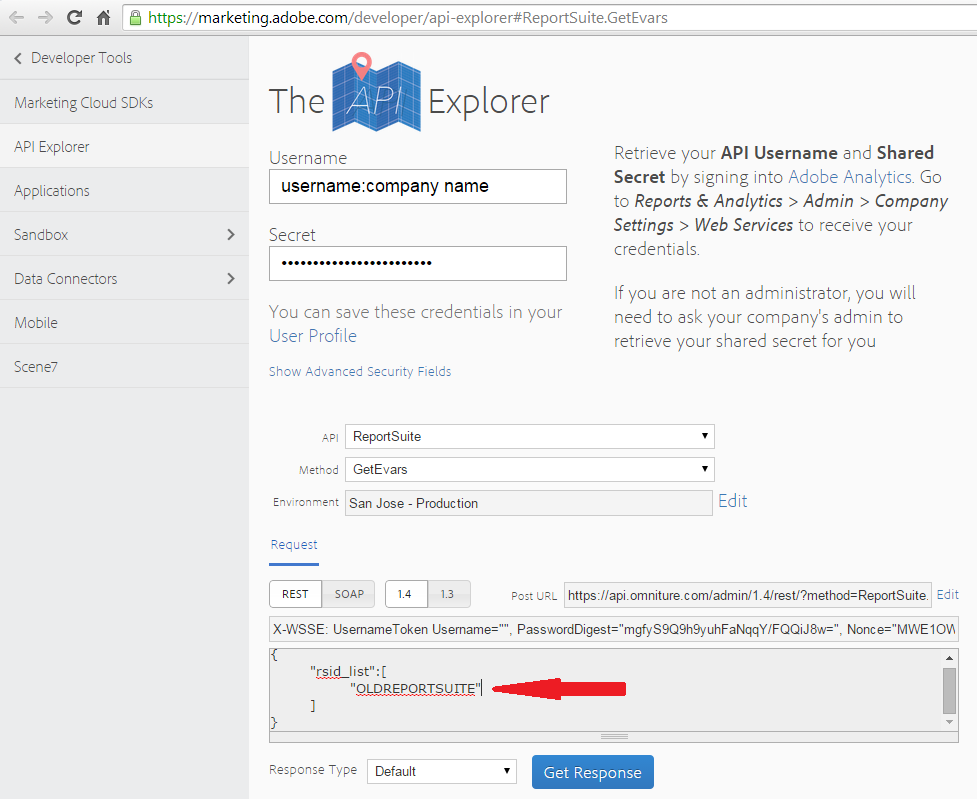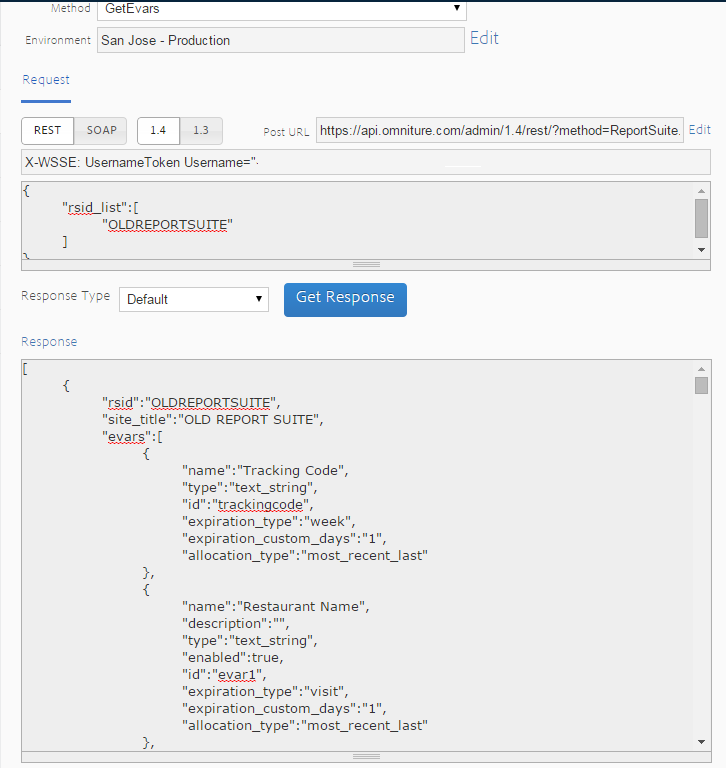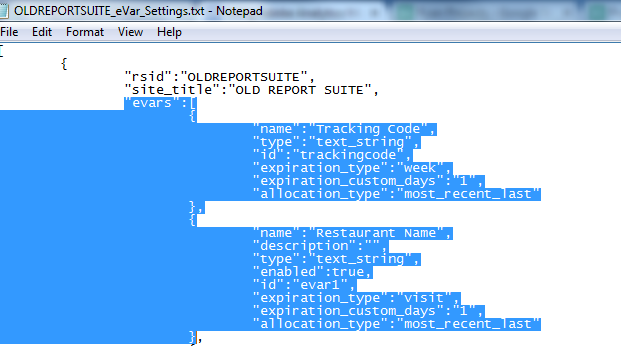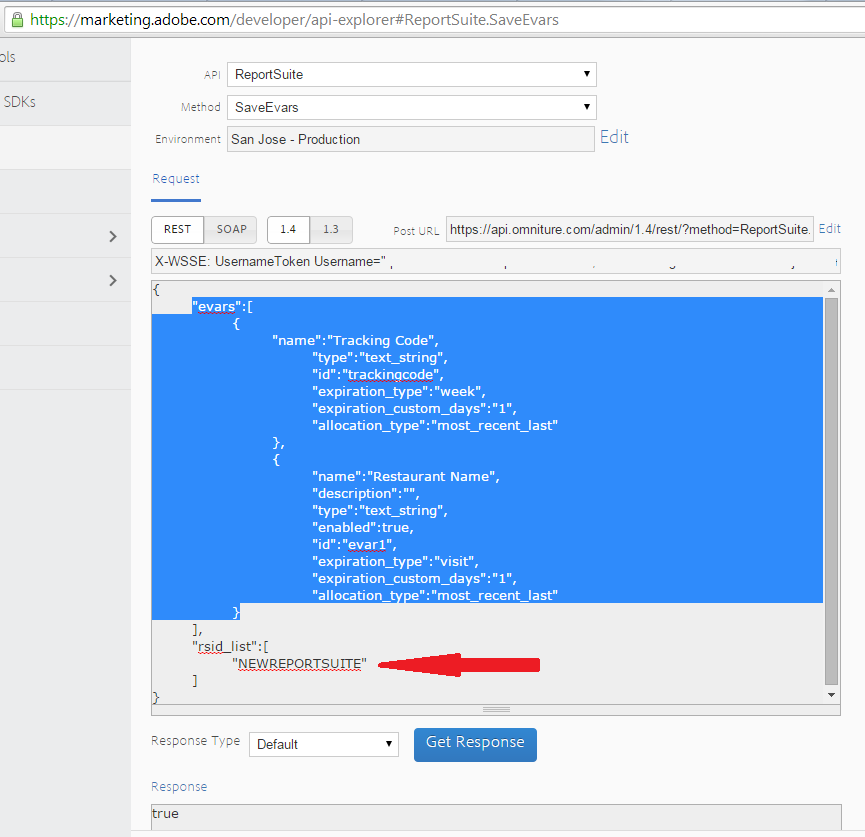
Last updated on August 9, 2018
In July 2018 Adobe took down the Developer Connection site tools and content that included the Adobe Analytics API Query Explorer, code samples, documentation and the developer forum. All of the Adobe Analytics API tools, documentation and samples have been moved to GitHub. To replace the Adobe API Query Explorer use Postman and the Adobe Analytics API Postman guide. If you have questions about the Postman setup let me know. Once you are setup you can follow the rest of this tutorial and use Postman instead of the Adobe API Query Explorer.
This post describes an actual situation I found myself in when setting up a new report suite in Adobe Analytics. In options 1-3 I go over standard administrative console based options for copying settings between report suites. In option 4 I introduce another option that uses the Adobe Analytics API. I recommend perfecting the Adobe Analytics API report suite configuration and usage on a test report suite first before applying what you’ve learned to a production report suite.
Check out my new post on How to Add 100 Users to Adobe Analytics in Seconds for information on how to use a web application that leverages the Adobe Analytics API to add multiple users fast.
So here is what happened. The other day I created a new report suite in Adobe Analytics and I wanted all the settings from an existing report suite copied to the new report suite. The easiest way to do this is to use the “duplicate an existing report suite” functionality shown in the screen shot below.
To get here I went to : Admin > Report Suites > Create New > Report Suite
Normally at this point everything would be good to go and my new report suite would be set up with all the same prop, eVar, and other settings of my existing report suite. Unfortunately, I copied the settings from the wrong existing report suite. I always make sure to double-check my settings and fortunately I caught my mistake. At this point I assessed my options. What was the easiest way to copy the settings I actually wanted to my new suite?
How to Copy Settings Between Existing Report Suites- Standard Adobe Analytics Admin Console Options
1) Go to the Report Suite Manager in the Admin Console and open the existing report suite settings you actually want to copy in one screen and open the new report suite in a second screen. Then go through each setting and copy the correct settings over. This is clearly a very tedious manual process.
2) Go to the Report Suite Manager in the Admin Console and select both report suites. Click on the first suite and hold down the control key and then click on the second report suite. When editing the settings you will see “Multiple” when the settings between the two suites differ. In the example screenshot below the Name of eVar #1 has “Multiple” values. If you click the link a new window will open and the name of eVar1 for both the new and old suites are shown. In this case you want the name in the new suite to match the old suite so you can type “Restaurant Name” directly into the name field highlighted by the red box in the screenshot below. Then you just have to make sure to scroll down and click Save. If you forget to Save your changes won’t apply. This is less manual than option 1, but still is not ideal.
3) Go to the good people at Adobe ClientCare and request they copy all the OLDREPORTSUITE settings to the NEWREPORTSUITE. Provide ClientCare with both report suite ids. Shout out to Russ @AdobeMktgCare for all his help. This probably is not ClientCare’s favorite task, but it is huge time saver so thank you.
How to Copy Settings Between Existing Report Suites- Using the Adobe Analytics API
4) Use the Adobe Analytics API to get the report suite settings from your OLDREPORTSUITE and copy those settings to the NEWREPORTSUITE. In this example we will just focus on copying the eVar settings to the new suite. This example uses the Adobe Analytics Query Explorer API website. The example uses the ReportSuite Administrative API. For more documentation on the Adminstrative API go to:
https://marketing.adobe.com/developer/documentation/omniture-administration/c-admin-api
Get your Web Service Credentials. If you are an admin go to User Management and select your login and click on edit. Make sure you are part of the Web Services Access Group and retrieve your Web Services User Name and Shared Secret from the green box in the access section. If you don’t have admin access request this info from someone who does have access.
Web Services Credentials
User Name: username:company name
Shared Secret: afadsfda8yfday87h8h484h8
Go to: https://marketing.adobe.com/developer/api-explorer#ReportSuite.GetEvars
Put in your Web Services Username and Shared Secret. You are using the ReportSuite API and the GetEvars Method.
In the Request box replace (string) with your report suite id. See the screen shot below. For this example the report suite id is: OLDREPORTSUITE
Click on the Get Response button. If you’ve done everything right a Response with all your eVar settings for your report suite will be returned like the screenshot below:
Next copy the full Response to a text editor like Notepad and save this file.
As a backup I suggest going through all the steps to pull the settings for the eVars on the NEWREPORTSUITE and save the full Response to a text editor like Notepad as well. This will let you revert to your old settings if something is incorrect.
Now it is time to copy the OLDREPORTSUITE eVar settings to the NEWREPORTSUITE. Go to: https://marketing.adobe.com/developer/api-explorer#ReportSuite.SaveEvars and put in your Web Services Username and Shared Secret. You are using the ReportSuite API and the SaveEvars Method.
Copy the eVar settings you’ve saved from the OLDREPORTSUITE file.
Take the copied eVar settings from the OLDREPORTSUITE and paste the values into the request box shown in the screenshot below. Also, in the Request box replace (string) with your report suite id. For this example the report suite id is NEWREPORTSUITE
Click on the Get Response button. If you’ve done everything right a Response with true will be returned like the screenshot above.
When you go in to the Conversion variable admin settings for the NEWREPORTSUITE you should see all the new eVar settings you’ve just uploaded via the API.
Final Thoughts
By using the Administrative API I was able to save myself a lot of time over the manually process of changing each setting in the Admin console. You can apply the methodology described in this post to set up eVars, props, success events, internal URL filters, real-time report settings and much more. Another great use case for the Administrative API is user management. Creating new users in the admin console takes a lot of clicks and can be a repetitive process. The Adobe Analytics API can save you a lot of time.
What have you done with the Adobe Analytics API? Please share your application ideas and possible use cases in the comments or connect with me on Twitter @ryanpraski
